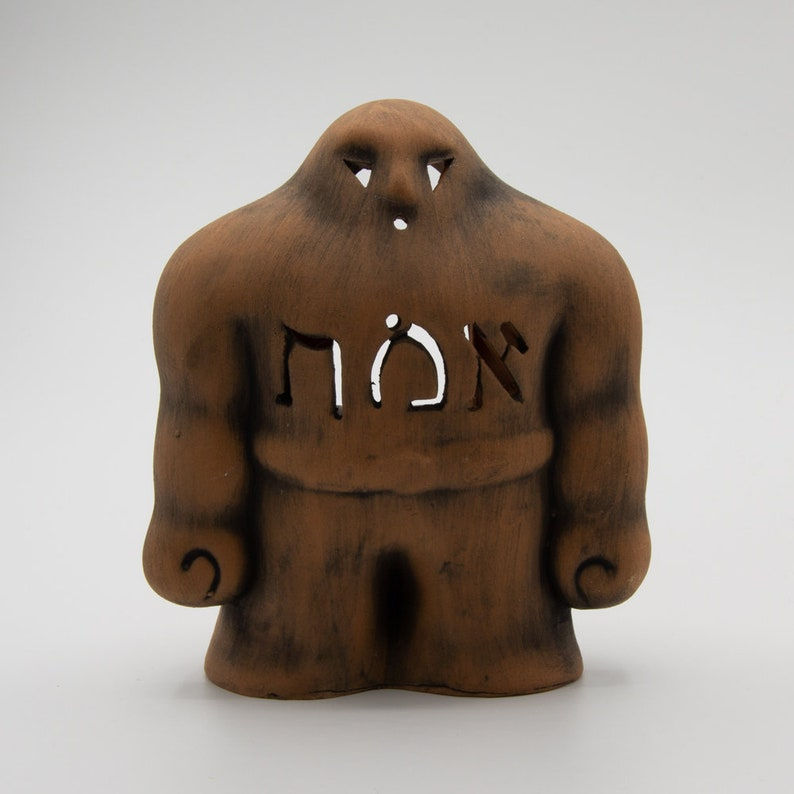The Golem
- A.C. Lang

- Aug 11, 2022
- 4 min read

In Jewish tradition, the golem is most widely known as an artificial creature created by magic, often to serve its creator. Especially well known are the idols and images to which the ancients claimed to have given the power of speech. Among the Greeks and the Arabs these activities are sometimes connected with astrological speculations related to the possibility of “drawing the spirituality of the stars” to lower beings
The word “golem” appears only once in the Bible(Psalms139:16). In Hebrew, “golem” stands for “shapeless mass.” The Talmud uses the word as “unformed” or “imperfect” and according to Talmudic legend, Adam is called “golem,” meaning “body without a soul” (Sanhedrin 38b) for the first 12 hours of his existence. The golem appears in other places in the Talmud as well. One legend says the prophet Jeremiah made a golem However, some mystics believe the creation of a golem has symbolic meaning only, like a spiritual experience following a religious rite.
The Sefer Yezirah (“Book of Creation”), often referred to as a guide to magical usage by some Western European Jews in the Middle Ages, contains instructions on how to make a golem. Several rabbis, in their commentaries on Sefer Yezirah have produced different understandings of the directions on how to make a golem. Most versions include shaping the golem into a figure resembling a human being and using God’s name to bring him to life, since God is the ultimate creator of life.
According to one story, to make a golem come alive, one would shape it out of soil, and then walk or dance around it saying combination of letters from the alphabet and the secret name of God. To “kill” the golem, its creators would walk in the opposite direction saying and making the order of the words backwards.
Other sources say once the golem had been physically made one needed to write the letters aleph, mem, tav, which is emet and means “truth,” on the golem’s forehead and the golem would come alive. Erase the aleph and you are left with mem and tav, which is met, meaning “death.”
Another way to bring a golem to life was to write God’s name on parchment and stick it on the golem’s arm or in his mouth. One would remove it to stop the golem.
Often in Ashkenazi Hasidic lore, the golem would come to life and serve his creators by doing tasks assigned to him. The most well-known story of the golem is connected to Rabbi Judah Loew ben Bezalel, the Maharal of Prague (1513-1609). It was said that he created a golem out of clay to protect the Jewish community from Blood Libel and to help out doing physical labor, since golems are extraordinarily strong. Another version says it was close to Easter, in the spring of 1580 and a Jew-hating priest was trying to incite the Christians against the Jews. So, the golem protected the community during the Easter season. Both versions recall the golem running amok and threatening innocent lives, so Rabbi Loew removed the Divine Name, rendering the golem lifeless. A separate account has the golem going mad and running away. Several sources attribute the story to Rabbi Elijah of Chelm, saying Rabbi Loew, one of the most outstanding Jewish scholars of the sixteenth century who authored numerous books on Jewish law, philosophy, and morality, would have actually opposed the creation of a golem.
The golem has been a popular figure in the arts in the past few centuries with both Jews and non-Jews. In the early 20th century, several plays, novels, movies, musicals and even a ballet were based on the golem. The most famous works where golems appear are Mary Shelley’s Frankenstein, Karel Capek’s R.U.R. (where the word “robot” comes from), Isaac Bashevis Singer’s The Golem and The X-Files. Today, there is even a golem museum in the Jewish Quarter of Prague.
Sometimes, someone who is large but intellectually slow is called a golem. Other civilizations, such as the ancient Greeks, have similar concepts.
source:
The most famous golem narrative involves Judah Loew ben Bezalel, the late 16th century rabbi of Prague, also known as the Maharal, who reportedly "created a golem out of clay from the banks of the Vltava River and brought it to life through rituals and Hebrew incantations to defend the Prague ghetto from anti-Semitic attacks" and pogroms. Depending on the version of the legend, the Jews in Prague were to be either expelled or killed under the rule of Rudolf II, the Holy Roman Emperor. The Golem was called Josef and was known as Yossele. It was said that he could make himself invisible and summon spirits from the dead. Rabbi Loew deactivated the Golem on Friday evenings by removing the shem before the Sabbath (Saturday) began, so as to let it rest on Sabbath.[6] One Friday evening Rabbi Loew forgot to remove the shem, and feared that the Golem would desecrate the Sabbath. A different story tells of a golem that fell in love, and when rejected, became the violent monster seen in most accounts. Some versions have the golem eventually going on a murderous rampage. The rabbi then managed to pull the shem from his mouth and immobilize him in front of the synagogue, whereupon the golem fell in pieces. The Golem's body was stored in the attic genizah of the Old New Synagogue, where it would be restored to life again if needed. According to legend, the body of Rabbi Loew's Golem still lies in the synagogue's attic. When the attic was renovated in 1883, no evidence of the Golem was found.




Comments